Review: Not Gay as in Happy, Queer as in Let’s Destroy Property
The lucid radicalism of Daniel Goldhaber’s ‘How to Blow Up a Pipeline’
The Yearning Rating: ✰✰✰✰
Romance ✰✰✰
Sex ✰✰✰
Storytelling ✰✰✰✰✰
Performance ✰✰✰✰
Yearning ✰✰✰✰✰1
Please consider hitting the ♥ button on this post—that way, more readers can discover us on Substack. If you do, you can say you knew us when :)
Light spoilers ahead.
Written by Ali Romig
At the risk of sounding insufferable, I must ask…when was the last time a filmgoing experience left you feeling incredibly, even uncomfortably present in your body? In an age where escapism is becoming more and more the point—or at least the goal—of a lot of the media we consume, creating something that aims to arouse its viewers to reality (rather than to distract from it) feels like a radical act unto itself. It’s in this undeniable sense of urgency that the intense eco-thriller How to Blow Up a Pipeline finds its strength. Watching director Daniel Goldhaber’s film felt a little like waking up—it left me clutching my chest, squirming in my seat, buzzing with anticipation, so incredibly aware of my surroundings and the space I was occupying. A myriad of important questions are implicitly asked throughout the film’s 100-minute runtime, but the most important might be this: You exist on this earth. What does that mean to you?
How to Blow Up a Pipeline is refreshingly authentic, but it’s also very much A Movie™. Part of what makes it so impressive is the way it expertly straddles the line between raw naturalism and Blockbuster-type action. Billed as a “heist,” the film follows a group of eight environmental activists—all with differing and affecting radicalizing motives—as they set out to sabotage an oil pipeline in West Texas. Much of the tense, visceral energy that courses through this film can be attributed to its style and its surprising faithfulness to its genre. The cinematography and sound editing come together in an assault on your senses, with many shots feeling overwhelmingly claustrophobic as the camera zooms in on the smallest of movements—all with the understanding that one ill-timed tremble and BOOM. The pacing, too, is impeccable. Obviously influenced by classics like Ocean’s Eleven, How to Blow Up a Pipeline hits each of its heist-like beats with precision. Only here, the stakes are raised to the point that it makes looting a casino seem trivial…if not completely inconsequential.
While I noted the influence of classic heist films, I was more taken by the ways in which How to Blow Up a Pipeline diverted from the formula. The film has a habit of cutting away from the most intense scenes at the height of anticipation in favor of flashbacks that help us to better understand our assembled activists and how they came together. This may sound counterintuitive—or like a quick way to completely let the air out of a scene—but I felt like it achieved the opposite. In most heist films, action is everything and character is secondary. All you really need to know is the motive, in the simplest terms, to get on board. But the unexpected focus on character in How to Blow Up a Pipeline proves crucial. Not only does it add emotional stakes, but it highlights the unavoidable magnitude of the issues at hand.
Each member of the team comes from a different background and has their own, unique reasons for showing up. Xochitl (Ariela Barer) became interested in sabotage after her mother died during a “freak heat wave.” Xochitl’s childhood friend Theo (Sasha Lane) has been diagnosed with terminal leukemia, the result of pollution in her hometown. Shawn (Marcus Scribner) is a college student in Chicago whose doomscrolling has turned into a need to do something. Michael (Forrest Goodluck), an Indigenous man from the Dakotas, is angry about the oil rigs that have destroyed the landscape and so channels his emotions into building homemade explosives. Dwayne (Jake Weary) is a Texas cowboy2 whose property has been seized through eminent domain in order to run more pipe through it. And so on.
The group’s diversity may sound somewhat illusory—aka, Hollywood fantasy—but it doesn’t come across that way. Instead of feeling like a disingenuous or vague call for acceptance, the film takes a less sentimental, but more effective approach: in order for a collective to function, you need people with conviction, varied skills, and diverse bodies of knowledge. How to Blow Up a Pipeline dares its viewers to reconsider what’s possible by acting as a believably flawed, yet successful example.
The film’s focus on its characters’ humanity is also subtly subversive. Too often, activist stories portray their crusaders as either overly-emotional “hippy”-types or joyless militants (of course, that is when they aren’t being rewritten as frustratingly moderate). Here, the characters all feel extremely accessible as well as radical; their worlds are familiar and lived in. They are portrayed as messy, funny, silly, stupid, cool, gritty, fumbling, stubborn—whatever, you name it! And even more refreshing, they are portrayed as romantic.
It would be easy for a movie that is attempting to communicate the direness of our current environmental situation to downplay something as human and inward-looking as romance. But How to Blow Up a Pipeline reminds us that the type of anger that drives someone to action cannot and would not exist without love. To feel a drive that powerful, you have to care about something, want3 something, love something enough to fight for it. And while love exists in many forms in the film—for family, community, ancestral land—there are two couples in the group who serve as beautiful examples of what selfless romantic love can look like.
One of the couples, Rowan (Kristine Froseth) and Logan (Lukas Gage, who just married now-husband Chris Appleton!) are Portland anarchists, and to be honest, when the movie first got going, I was convinced I wasn’t going to like them. They initially gave off the vibe of people who are less dedicated to the work and more in it for the thrill. But—without giving too much away—I’ll admit that by the end, their charm and vivacity won me over. I'd say this pair is more passionate than they are romantic (at least, in the traditional sense). Rowan and Logan throw themselves head first into whatever they’re doing; whether partying at a rave or blowing up a pipeline, they show up with the same amount of presence and intent. While it may seem like it at first, their indulgence isn’t meant to discount them as unserious. Rather, it's another way that the film dares it’s viewer to imagine a more embodied, less passive existence. And the fact that they live so spontaneously, while remaining good partners to one another, feels like a big “fuck you!” to anyone who thinks freedom and commitment are mutually exclusive.
Our other lovebirds, Theo and girlfriend Alisha (Jayme Lawson), may be less corporally spontaneous, but I’d argue that their connection is the emotional crux of the film (and I am NOT just saying that because they’re GAY). Theo’s cancer diagnosis leaves her both physically exhausted and righteously pissed off. She is a young woman whose life has quite literally been stolen from her by fossil fuels. At one point, when Alisha tries to comfort her, Theo tells her that she’ll never understand because she didn’t grow up where Theo did. This push-and-pull between the two, and later between Alisha and others in the group, persists throughout the film, with Alisha often coming forward as the voice of doubt. When discussing the immediate implications of blowing up the pipeline, she asks them to look beyond the intent of the act and consider who will actually be hurt by rising oil prices. But even with these misgivings, Alisha fights alongside Theo. Even with no future in sight for them as a couple, Alisha’s love for Theo remains her motivating factor. Her devotion is powerful and heartbreaking and painfully grounded in harsh reality. It reminds us that in this world where a future is not guaranteed, showing up for each other, right now, is really all we can do.
In my view, How to Blow Up a Pipeline’s queerness goes beyond the sapphic love story at its center. Its anti-establishment ethos and radical message are queer to the core. The filmmakers are empathetically portraying a group of people who are rejecting what society has deemed acceptable and actively choosing to imagine a different path for themselves. Even if that path leads them to a less “comfortable” life, they see the good in it. It brings to mind one scene towards the beginning of the film where the group sits around a fire and wonders how they might be portrayed by the media once all is said and done. “They’ll call us terrorists,” someone says. Another then goes on to list other activists who were labeled terrorists, like Malcom X and MLK. Alisha is quick to note that what they are doing is a far cry from the Civil Rights Movement, while others disagree. No consensus is ever reached, which just serves to highlight how futile the exercise was in the first place. We label ourselves and others as a shortcut to understanding and end up missing the point entirely. This movie is basically a PSA for thinking outside those limited frameworks—it’s encouraging us to think bigger, think differently. If that’s not queer, I don’t know what is!
The movie’s focus on community extends to how it was made as well. If you watch the film all the way through to the credits, you’ll notice that instead of crediting Daniel Goldhaber first, the “film by” section lists Goldhaber, co-writer Jordan Sjol, Ariela Barer, who is also credited as a producer, and the film’s editor Daniel Garber. Goldhaber shared with Slant that: “We don’t decide on the ‘film by’ credit until the movie’s done. It’s really a question of collectively being, ‘Where do we feel like the vision of this movie came from? And who do we feel shares it?’” Other actors in the film also share producing credits, like Michael Goodluck, who is himself from North Dakota and had a heavy hand in shaping his character’s trajectory. I love knowing this about the film, as I truly believe that the best art is created collaboratively; rejecting arbitrary hierarchies is liberating! I’m also sure that this kind of hand-holding was helpful when actually getting the film distributed. Between multiple FBI warnings and oil-backed studios, How to Blow Up a Pipeline hasn’t traveled an easy road to theaters. This fact only serves to further prove how deep the problem goes.
I think the filmmakers found an incredibly effective formula for translating the source material into an engaging story with a humanist element that doesn’t distract from the importance of taking tangible, radical action to restore our planet’s health. We have heard time and time again that we are running out of chances to do this; and that feeling of helplessness, of how can I possibly make a positive impact when so much harm has already been done?, is catching. What I loved so much about this movie is how invigorating its gut-punch is: survival on this planet is complex and messy, with no straightforward solutions. But that doesn’t mean there’s no hope. All I can say is watch this film and if afterwards you’re left buzzing with a frenetic kind of energy, you can look up further actions to take here.
How to Blow Up a Pipeline is currently playing in theaters. Check here for showtimes near you.
Next week on The Yearning, Meg will adventure into the archives with a review of Maria Maggenti’s The Incredibly True Adventure of Two Girls in Love.
Yearning for a better life, a healthy planet, a future with clean air and fresh water, etc.
At one point, Dwayne cuts the bottom half of his shirt off to help an injured teammate, leaving him in what looks like a fun little crop top, and I just felt that deserved a mention!
I am tempted to use the word “yearn”, but I’ll resist


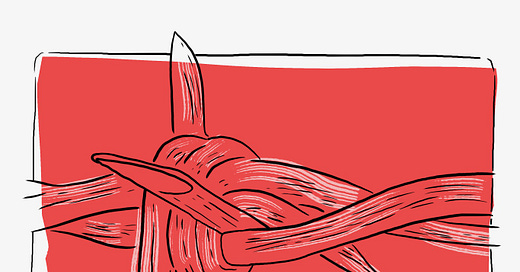



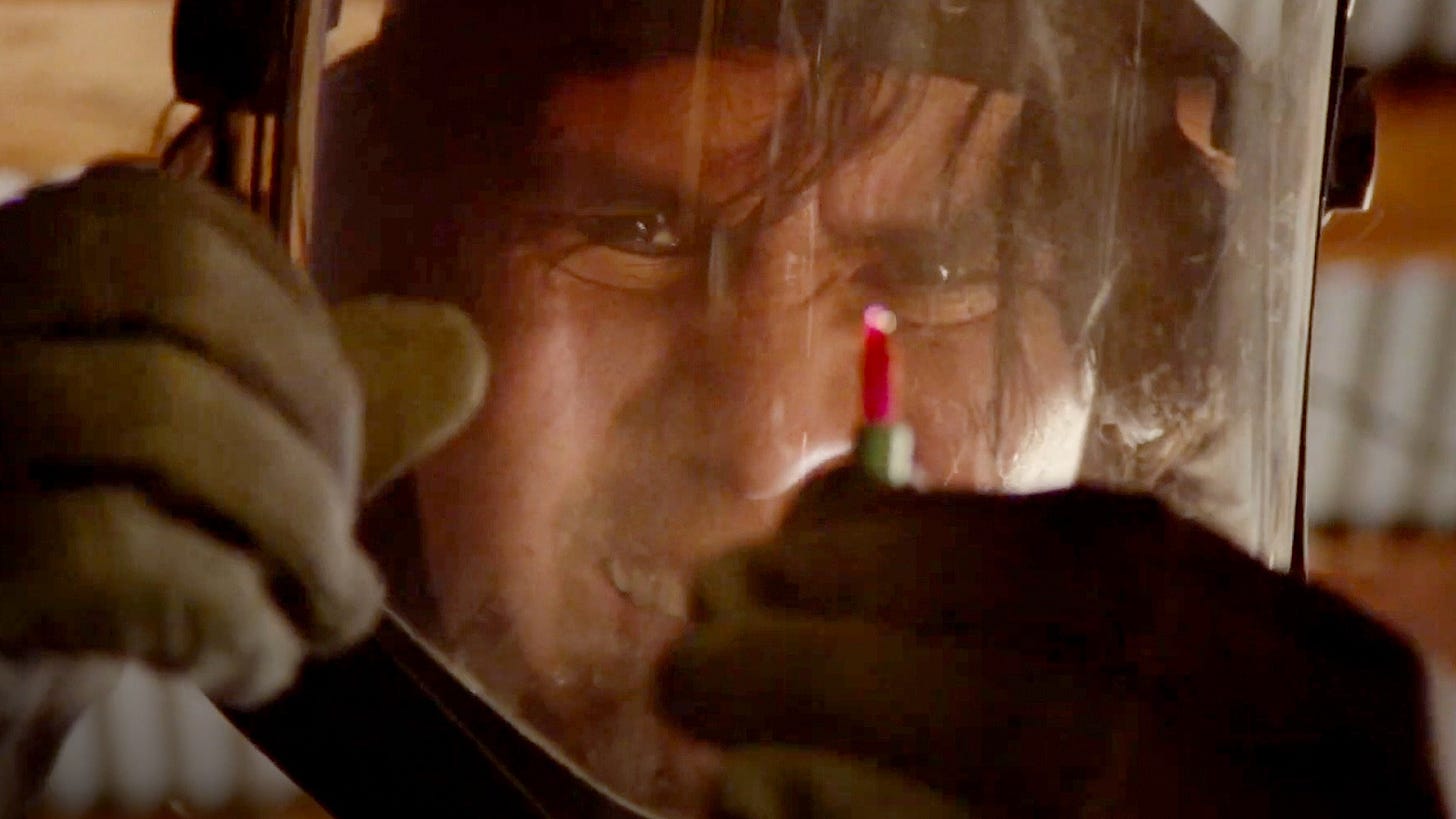
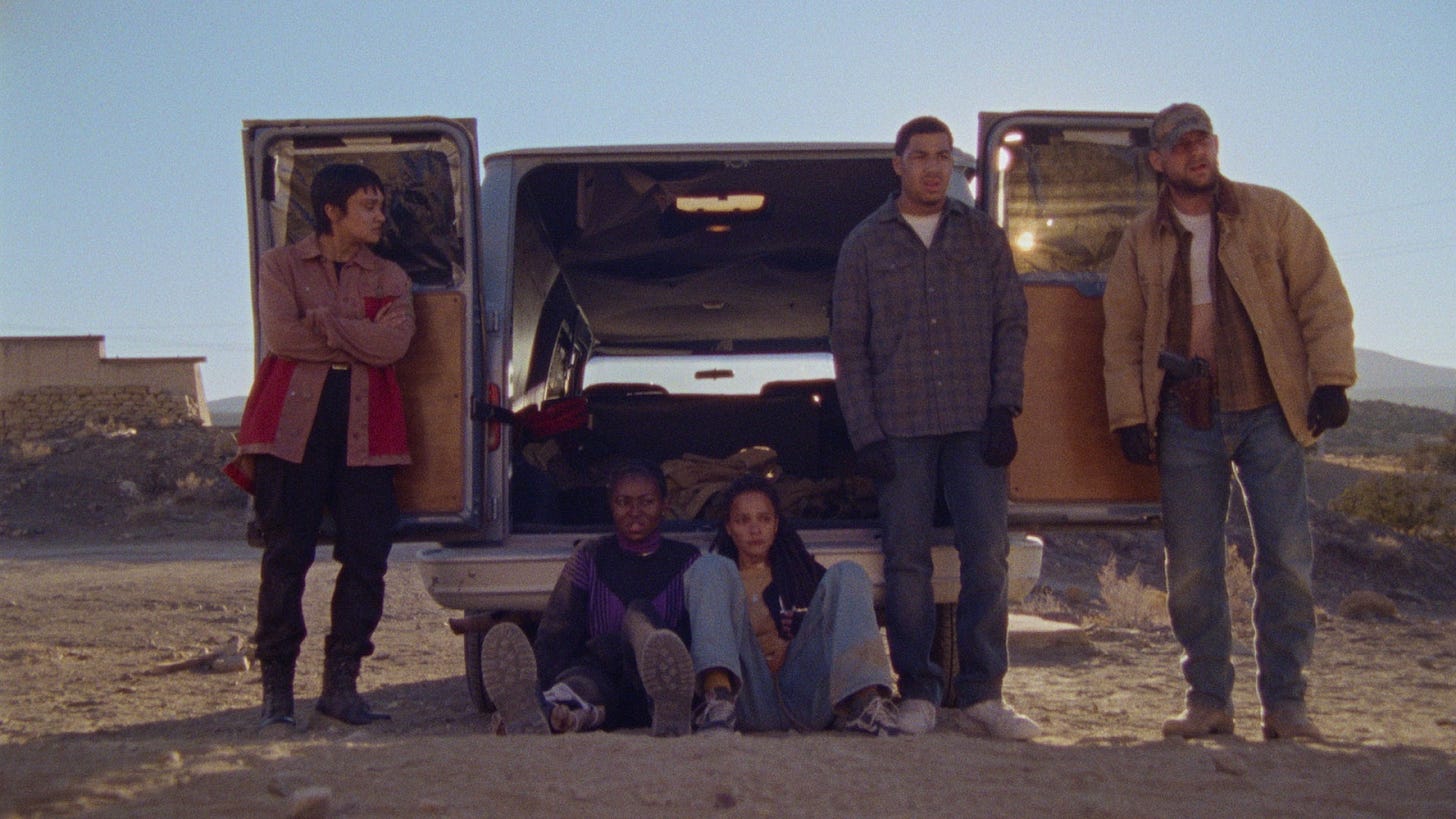
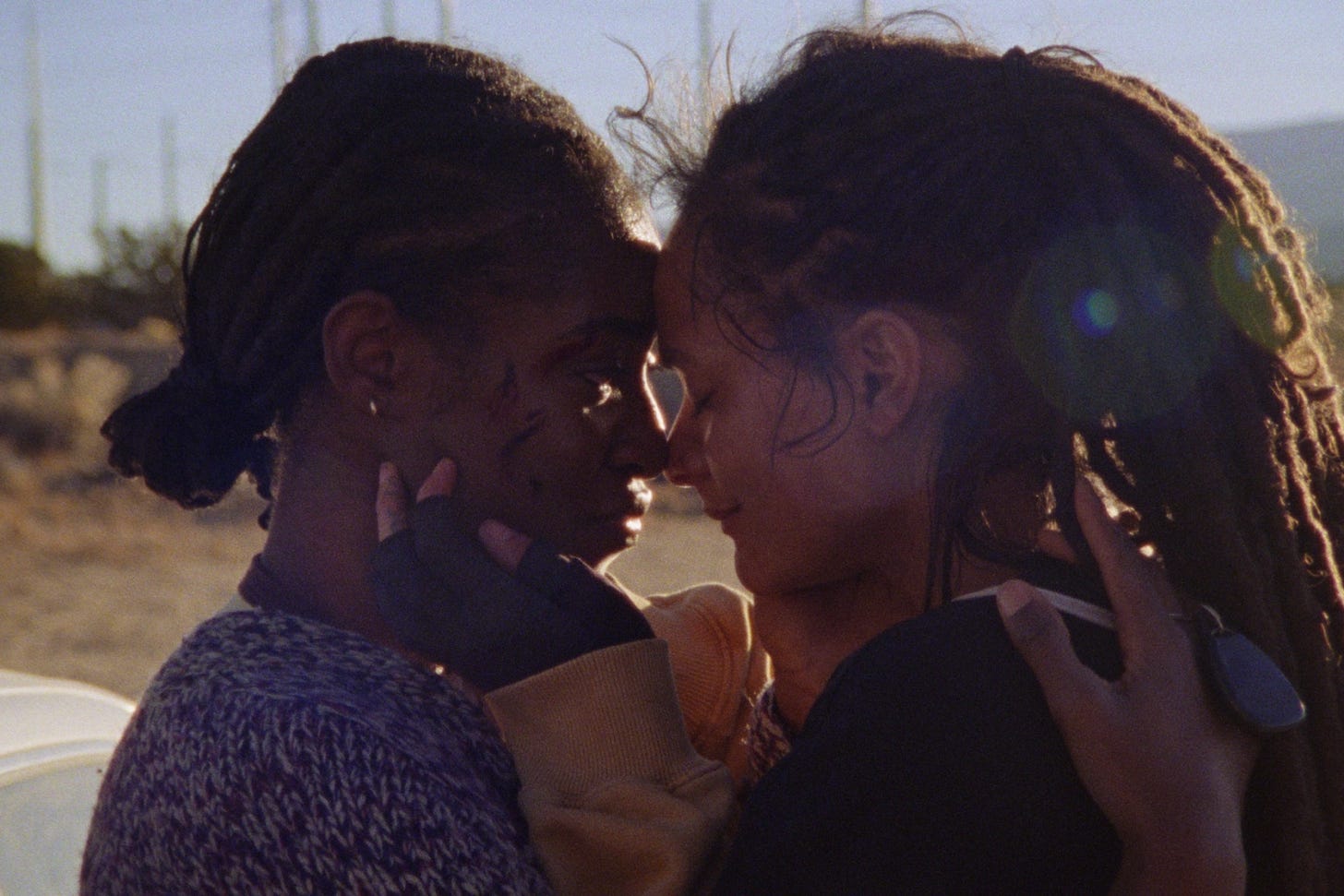
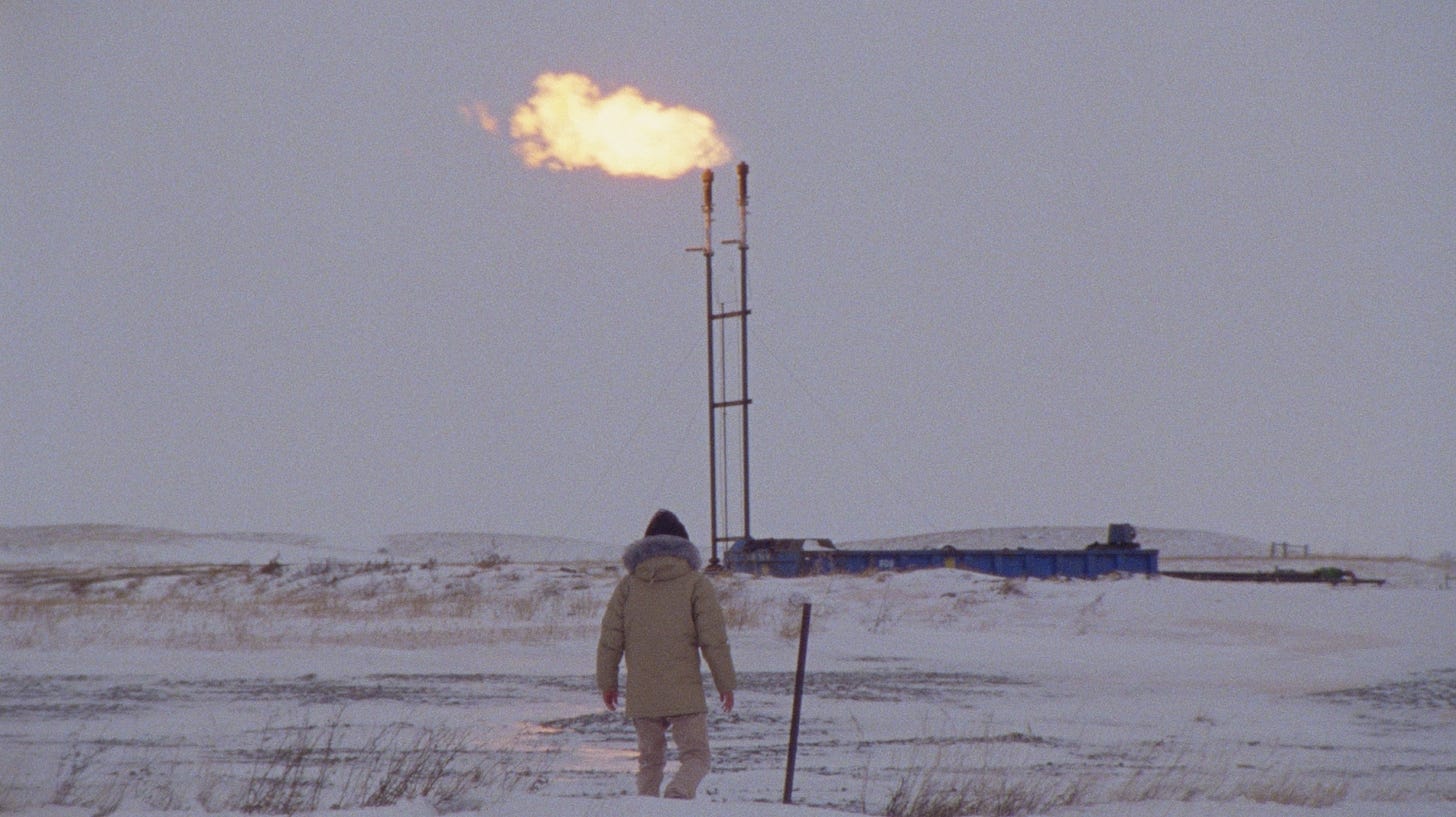
Incredible review!!! I had no idea what to expect when I went to see this movie with Meg. I walked out feeling that electric buzz you so perfectly described. This movie surprised me!
What a smart, insightful, terrific piece of critical writing. Made me want to see the film. How the film and the way the filmmakers worked both showed us new ways of being.